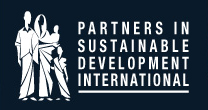10 Ways Poverty Affects Children
Poverty affects children each and every moment of their lives. Its effects build and build, intensifying the damage and destruction as the child grows older. There are 10 ways the poverty affects children:
Poverty stunts physical growth and development.
Poverty hinders social and emotional development.
Poverty shortens life expectancy.
Poverty inflates infant and child mortality rates.
Poverty increases the likelihood a child will have a chronic health condition.
Poverty ravages children with preventable diseases.
Poverty creates, perpetuates and widens achievement gaps.
Poverty increases parent stress and impairs parenting practices.
Poverty introduces neglect, insecurity and instability into children's lives.
Poverty marginalizes and traumatizes children, creates dependencies, and fosters a society that feeds upon its weakest members.
Poverty attacks and affects children before they’re even born.
Starting in the womb, issues such as maternal malnutrition and disease often compromise an infant’s ability to survive. Premature birth, which significantly diminishes a child’s chance of survival for children in low- and middle-income countries, is common to the global poor with about 10 percent of babies born prematurely each year.1
Assuming a child survives the birth experience, his or her need to fight for life continues. In 2018, an estimated 2.5 million children died in their first month of life.2 That’s approximately 7,000 babies every day. Most of them died in their first week of life; 1 million died on their first day, and another 1 million died within the next six days.2
Children who lag behind in learning, knowledge and socio-emotional development find it increasingly difficult to catch up. Any lack in early childhood development can close doors later in life, trapping them in a life without resources, support, opportunity, and hope for improvement or change.
Growing up in poverty increases the physical and emotional stress in a child’s life. Lack of economic resources within a family increases a child’s vulnerability to exploitation, including child labor and trafficking.
This stress can also prompt negative biological changes in the cardiovascular, immune, neuroendocrine and cortical systems, which can have long-term implications for learning, decision-making and overall health and well-being.
Poor children also experience a disproportionate amount of neglect and social deprivation thanks to poverty. They are less likely to feel valued and loved. They often have lower self-esteem, less self-confidence, and greater incidences of mental health problems. They feel unsafe, marginalized, exceedingly vulnerable, and constantly threatened.
Children living in poverty are also more likely to be exposed to environmental toxins and other hazards, including crime and violence. Consider growing up in a slum without proper sanitation and clean water, where alcoholism, gang violence and drugs are prevalent. Even if not directly caught up in any violence, simply witnessing it, especially regularly, can adversely affect child development.
In the context of poverty, a holistic approach to child development is especially powerful. Breaking the cycle of deprivation, desperation and hopelessness offers poor children positive opportunities for growth. It helps untangle the culture of poverty and the lie of worthlessness before it can strangle a child.
What are the Effects of Child Poverty on Society?
In 2000, the United Nations identified eight contributors to human suffering; one of the eight causes was poverty.
Along with hunger, inequality, infectious diseases and child mortality, poverty affects our ability to create a sustainable future for our children. Child poverty tears children down through lack of food, clothing, medical care, education, and work opportunities. It marginalizes and traumatizes children, creates dependencies, and fosters a society that feeds upon its weakest members.
What Can We Do to Stop Child Poverty?
Given the level of poverty around the world– or even just in Bangladesh - it’s easy to look at child poverty and feel hopeless. But child poverty isn’t an impossible problem.
When you make a donation to PSDI, the families of poor children participate in a holistic model of poverty eradication that meets both critical needs of families and provides long-term solutions for them to become self-sufficient, giving them the ability to support their children with love and hope for a better future.
Your donation reduces the side effects of poverty by ensuring that each child in our program receives care for their social, educational, health, spiritual, environmental, and economic needs. Thank you.
An Except from a Blog from Compassion International
Sources for Child Poverty Facts and the Effects of Poverty on Families and Children:
1 Max Roser, Hannah Ritchie and Bernadeta Dadonaite (2020) - "Child and Infant Mortality". Published online at OurWorldInData.org. Retrieved from: 'https://ourworldindata.org/child-mortality' [Online Resource]
2 "Newborn Care." UNICEF DATA, Oct. 2019, data.unicef.org/topic/maternal-health/newborn-care/.
3 "Children: Reducing Mortality." World Health Organization, 19 Sept. 2019, www.who.int/news-room/fact-sheets/detail/children-reducing-mortality.
4 "Malnutrition." World Health Organization, 16 Feb. 2018, www.who.int/news-room/fact-sheets/detail/malnutrition.
5 "Adolescent Mental Health." World Health Organization, 23 Oct. 2019, www.who.int/news-room/fact-sheets/detail/adolescent-mental-health.
6 2019 Human Development Report, United Nations Development Program.
